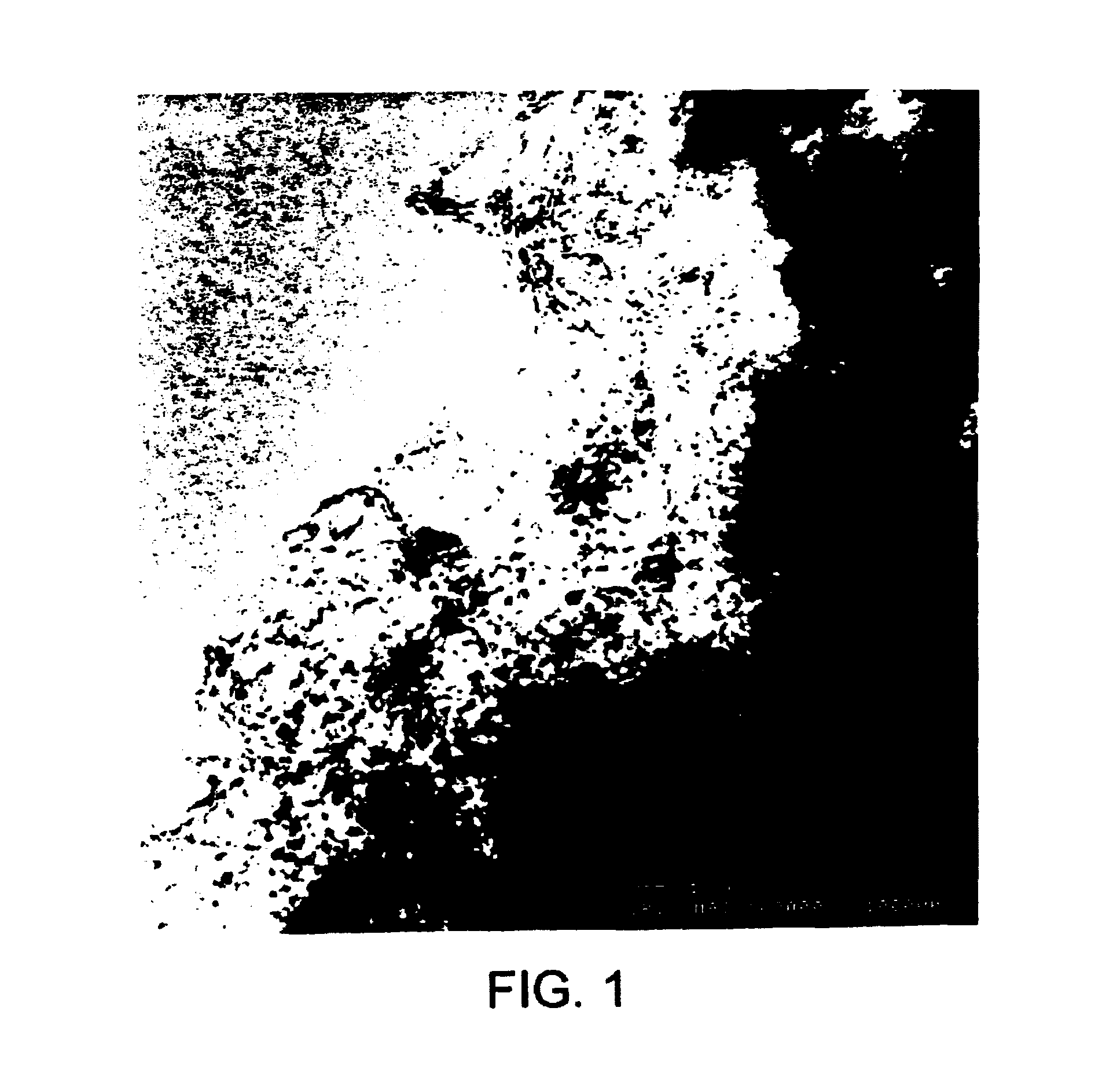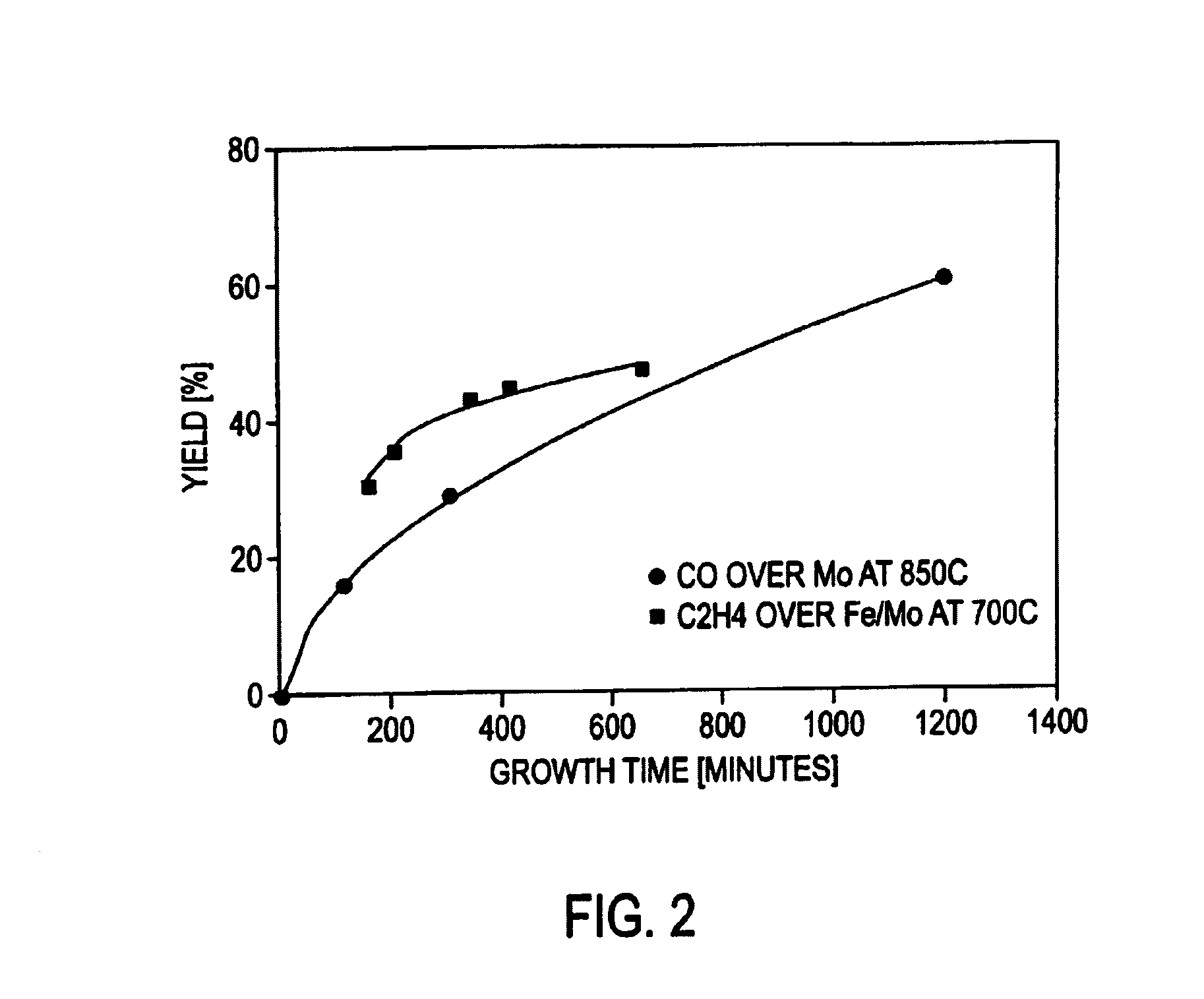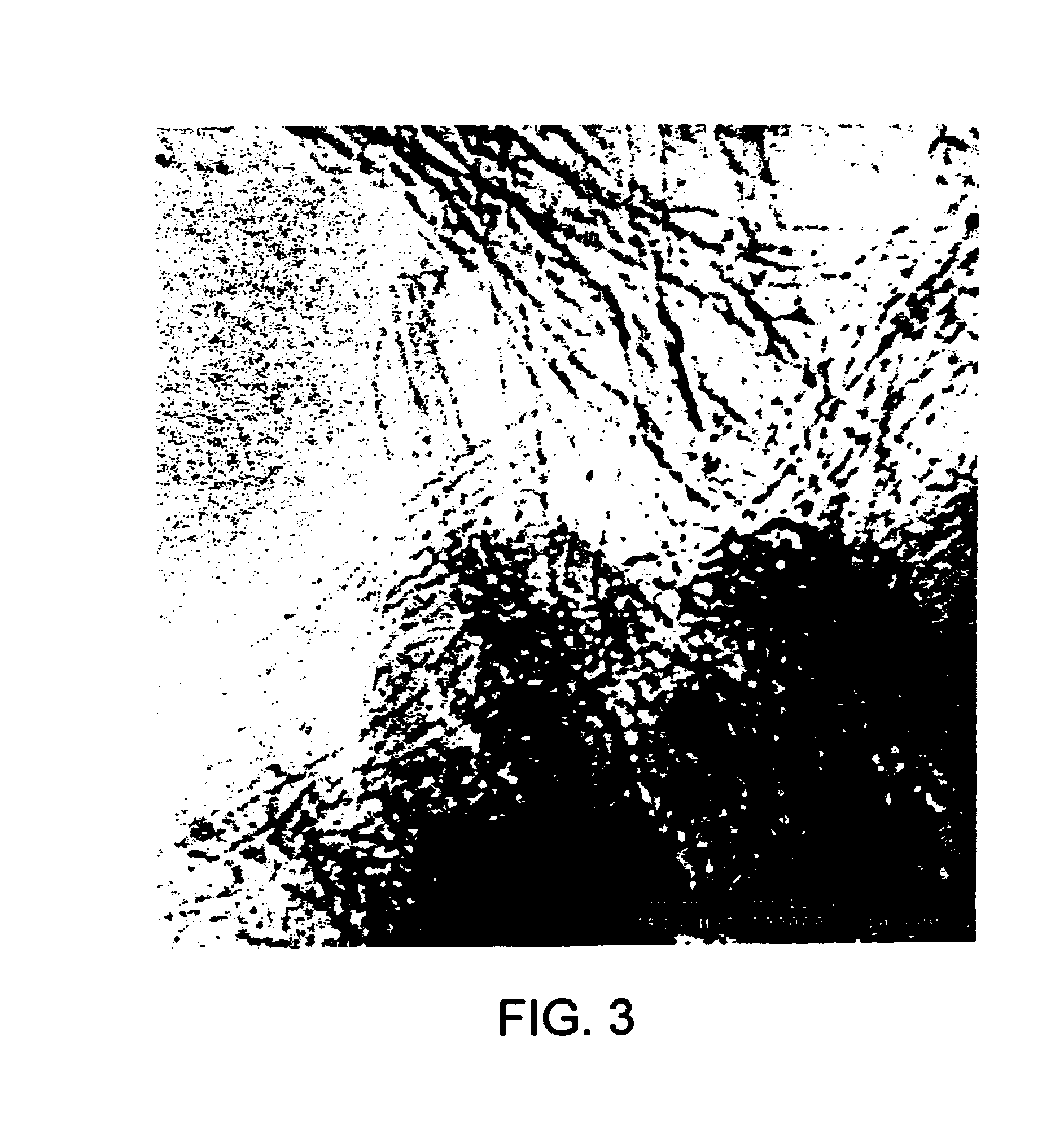Catalytic growth of single- and double-wall carbon nanotubes from metal particles
a carbon nanotube and metal particle technology, applied in the direction of carbonsing rags, physical/chemical process catalysts, metal/metal-oxide/metal-hydroxide catalysts, etc., to achieve the effect of increasing the production rate of single-wall nanotubes
- Summary
- Abstract
- Description
- Claims
- Application Information
AI Technical Summary
Benefits of technology
Problems solved by technology
Method used
Image
Examples
example
[0056]In order to facilitate a more complete understanding of the invention, an Example is provided below. However, the scope of the invention is not limited to specific embodiments disclosed in this Example, which is for purposes of illustration only.
1. Preparation
[0057]Single wall carbon nanotubes may be grown by passing carbon-containing gases (CO or C2H4) at elevated temperatures over nanometer-size metal particles supported on larger (10–20 nm) alumina particles. Two different metal catalysts may be used, one containing pure Mo, the other containing Fe and Mo. The ratio of FE to Mo may be 9:1. Both catalysts were made using a method known in the art.
[0058]For each growth experiment, a quartz boat containing a carefully weighed amount (typically 20 mg) of the catalyst powder was placed in the center of a 1 inch quartz tube furnace. The system was purged with Ar, then heated under flowing reactant gases to an elevated temperature for a controlled time. The resulting catalyst mate...
PUM
| Property | Measurement | Unit |
|---|---|---|
| Temperature | aaaaa | aaaaa |
| Temperature | aaaaa | aaaaa |
| Temperature | aaaaa | aaaaa |
Abstract
Description
Claims
Application Information
 Login to View More
Login to View More - R&D
- Intellectual Property
- Life Sciences
- Materials
- Tech Scout
- Unparalleled Data Quality
- Higher Quality Content
- 60% Fewer Hallucinations
Browse by: Latest US Patents, China's latest patents, Technical Efficacy Thesaurus, Application Domain, Technology Topic, Popular Technical Reports.
© 2025 PatSnap. All rights reserved.Legal|Privacy policy|Modern Slavery Act Transparency Statement|Sitemap|About US| Contact US: help@patsnap.com



